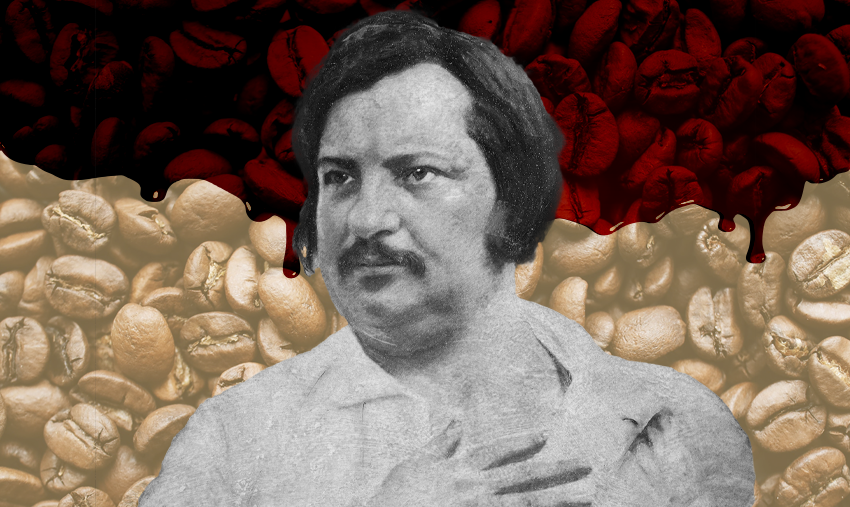‘The plexus becomes inflamed’
The jittery life and trailblazing death of Honoré de Balzac

Modern, mainstream discussions of Honoré de Balzac usually focus on the coffee.
Known as the father of the modern novel, the French author Balzac (1799-1850) wrote 90 of the things in the last 20 years of his life, many of them part of a series called The Human Comedy. He did this by writing longhand with a quill pen, over 14- to 18-hour work days. And yes, he did *that* by drinking a buttload of black coffee. How much of a buttload? A popular, apocryphal estimate is 50 cups a day – apocryphal because in this writer’s opinion that’s a lot, even for those tiny little French cups.
The point is, no one really knows for sure, but it was definitely a whole lot of coffee. Horrifyingly, he once even described finely grinding beans and then just swallowing the grounds on an empty stomach:
It brutalizes these beautiful stomach linings as a wagon master abuses ponies; the plexus becomes inflamed; sparks shoot all the way up to the brain. From that moment on, everything becomes agitated. Ideas quick-march into motion like battalions of a grand army to its legendary fighting ground, and the battle rages. Memories charge in, bright flags on high; the cavalry of metaphor deploys with a magnificent gallop; the artillery of logic rushes up with clattering wagons and cartridges; on imagination’s orders, sharpshooters sight and fire; forms and shapes and characters rear up; the paper is spread with ink-for the nightly labor begins and ends with torrents of this black water, as a battle opens and concludes with black powder.
– The Pleasures and Pains of Coffee
Nope, brother. Just nope.
In light of that paragraph, it’s tempting to buy into the legend that Balzac died of a caffeine overdose. He didn’t, but there is a cool story there: See, sitting at a desk, writing and getting up only to brew more coffee for an average of 16 hours a day isn’t good for … any part of your body, really. Balzac had heart problems, breathing problems, obesity, eczema, and edemas (swelling from trapped fluid, often a result of heart failure).
One night he was suffering from such an edema when he bumped his leg on the corner of a cabinet. Fluid splooshed out, and he suddenly felt better. Encouraged by this development, his physician decided to drain that bad boy further by inserting a trocar – that is, a needle with a tube attached. But alas, surgical practices were not awesome in 1850, and Balzac got gangrene and died within 24 hours.
What’s remarkable about this story is that in the mid-1800s, doctors normally used leeches to drain whatever on your body needed draining. The only reason that practice seems so medieval today is because surgical hygiene finally caught up, and decades after Balzac’s intervention, doctors warmed to trocars in a big way. According to the paper that recognized this forward-thinking treatment, “Balzac’s physicians anticipated the invention of the ‘Southey tube,’ whose use evolved in the following century to treat obstinate edema in heart failure patients.”
So really, big ol’ jittery Balzac was ahead of his time in more ways than one. But all of those ways worked together to kill him, at age 51. C’est la vie.
